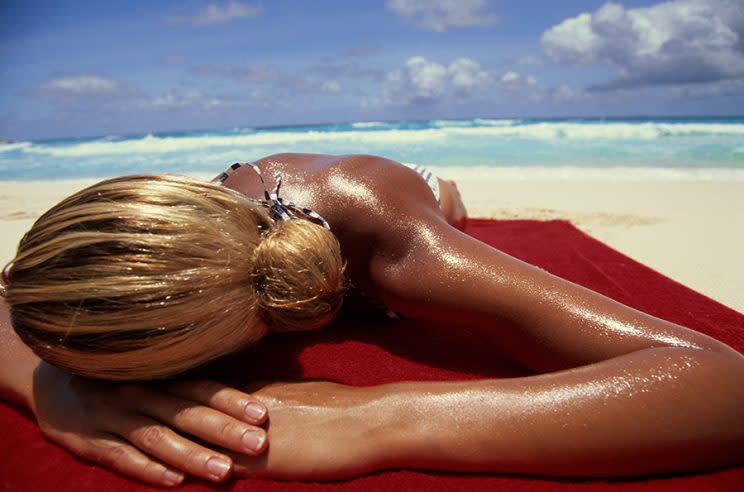Young Adults With Melanin-Rich Skin Are More Likely to Sunburn

If you think you won’t get sunburned just because you aren’t fair-skinned, think again.
According to a study published in The Journal of the American Osteopathic Association, men and women between the ages of 18 and 29 — particularly those who have skin with a higher melanin content and who identify themselves as nonwhite — are at an increased risk for sunburn.
To pinpoint predictors of sunburn, investigators recruited 437 Florida residents and asked them to complete a survey about their dermatologic history, as well as their knowledge, attitude, and behavioral factors associated with sun exposure.
“Osteopathic medicine is largely focused on prevention, and melanoma, the skin cancer caused by sun exposure, is imminently preventable,” said lead researcher and osteopathic dermatologist Tracy Favreau in a press release. “The concern here is that participants with high melanin content skin may think they’re naturally protected from sunburn, which isn’t true. We need to develop tailored sunburn prevention programs to change attitudes and reduce the risk of melanoma.”
While melanoma accounts for only 1 percent of skin cancers, it causes a majority of skin cancer deaths, according to statistics from the American Cancer Society. And even though the average patient with melanoma is diagnosed at the age of 63, this disease is one of the most common cancers in young adults — especially in younger women.
“We were surprised about some findings, but were not surprised about others,” lead author Sergey Arutyunyan, a fourth-year osteopathic medical student, tells Yahoo Beauty.
For example, the research team assumed that the younger population would be more likely to have negative attitudes toward sun protection, such as opting not to sit underneath an umbrella or wear a hat at the beach.
“However, the fact that nonwhite people came out to be a predictor of sunburn was somewhat interesting,” says Arutyunyan. He also found it “intriguing” that there were no statistical differences between the men and the women, and that levels of education, levels of income, and employment status “didn’t matter.”
Arutyunyan also found it particularly interesting that in the study, spending less than one hour outdoors was a greater predictor of sunburn versus spending four or more hours outdoors.
That finding, he says, may be due to people underestimating the amount of time they plan on being outside. “Sometimes errands will take longer than you expect, so you may think, ‘I don’t have to apply sunscreen or wear a hat — I’m just going to be in and out,’” explains Arutyunyan. “But if you’re under extreme sun and you’re not protected, even a half-hour is enough sometimes to get a sunburn.”
He strongly believes that technology — including social media and an app that “gamifies sun protection and rewards taking precautions” — can be a highly effective tool for promoting skin care and skin cancer prevention strategies.
“The major drive behind all of this is that people like looking tan,” says Arutyunyan. “So we hope that several actors, actresses, celebrities, and influential social media figures will come out and say, ‘I’m going to adhere to sun protection and try to keep my skin as young and healthy as I can.’”
A possible slogan: Being un-tan is the new tan. “It’s about projecting a new standard of beauty,” he concludes. “I think people will notice and will start following.”
Read More:
Friends Have High Success Rate in Finding Each Other’s Melanomas
Make Up For Ever Is the Latest Beauty Brand to Break Diversity Barriers
Women Don’t Sweat Less Than Men After All
Let’s keep in touch! Follow Yahoo Beauty on Facebook, Twitter, Instagram, and Pinterest.

